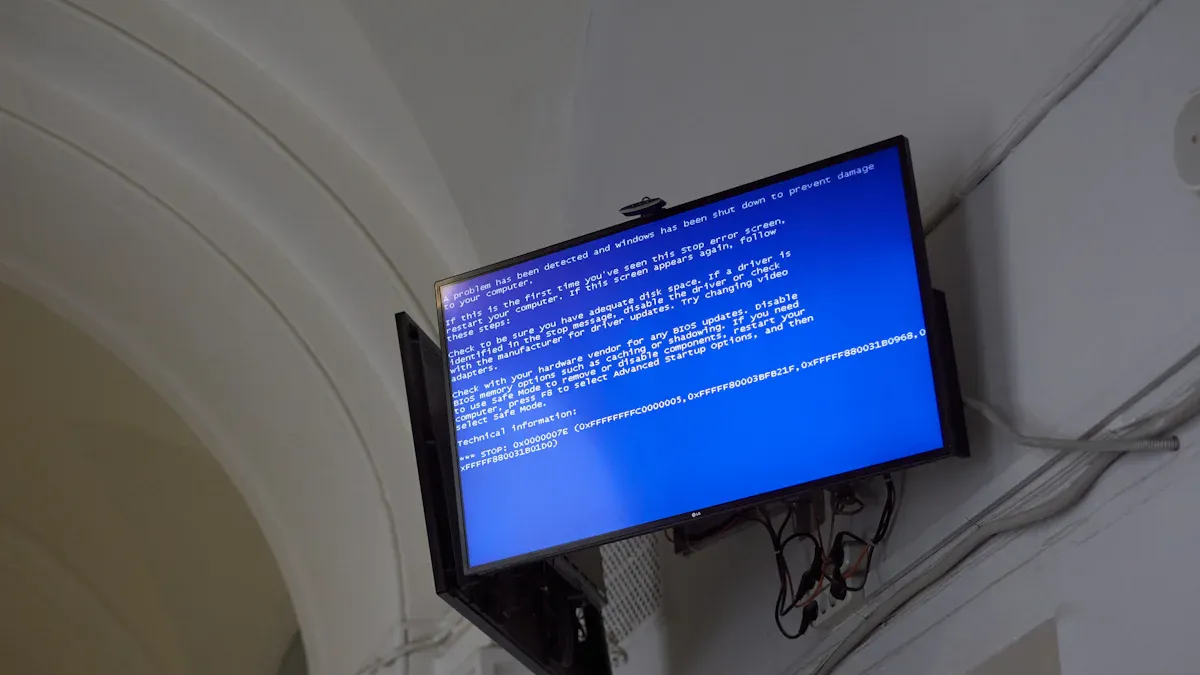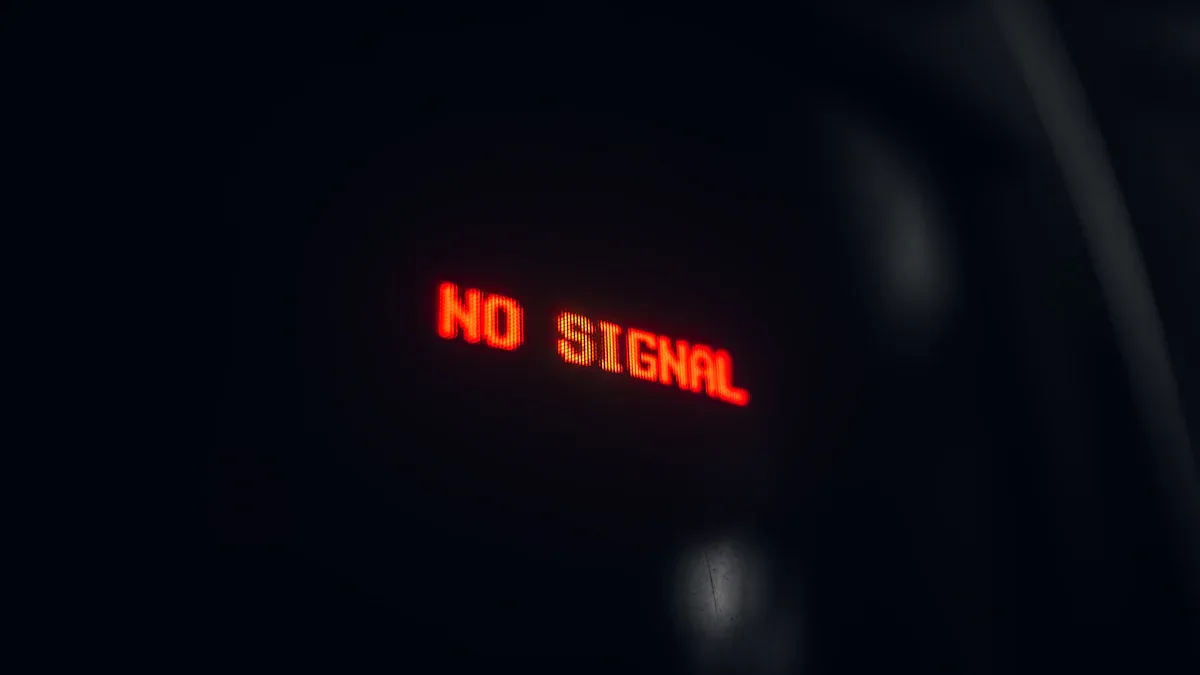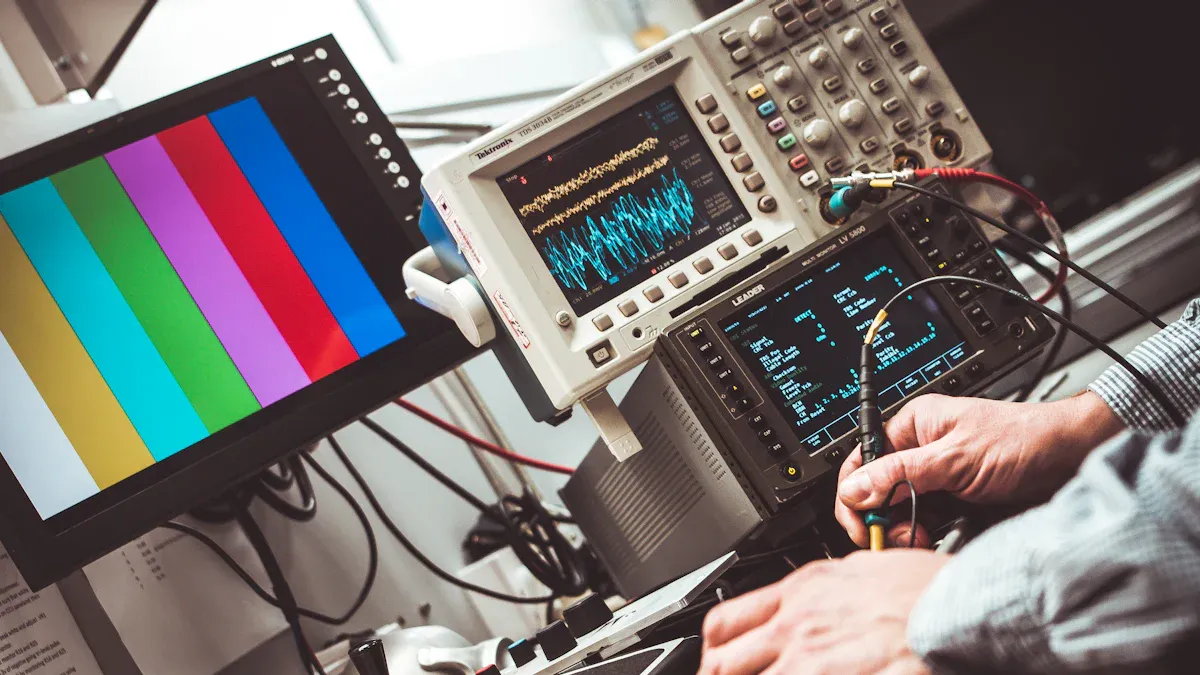Troubleshooting Common Issues with LED Display Systems

You want your led display systems to work smoothly, but sometimes common issues pop up. Maybe your screen stays blank, colors look strange, or parts of your led displays flicker. These common problems can seem frustrating, but don’t worry—most led display problems have quick solutions. Many issues come from common root causes like loose cables or power hiccups. With a clear troubleshooting process, you can fix most problems fast and get back to normal.
Key Takeaways
First, look at all cables, power plugs, and software settings. This helps fix most LED display problems fast. Power problems can make the screen go black or flicker. Make sure power supplies and cables are working right. Signal and data problems can happen with loose or long cables. Use good cables and check if they are connected well. Clean the display often and update the software. This keeps colors bright and stops flicker or brightness problems. If problems do not go away after these checks, call a technician. This stops more damage and makes sure repairs are done right.
LED Display Problems
When you run into led display problems, you want quick answers. Let’s look at the most common failures you might see in led display systems and how you can fix them.
No Display
You turn on your screen, but nothing shows up. This is one of the most frustrating led display issues. Here’s how you can troubleshoot and solve this problem step by step:
Check Content Scheduling
Make sure your content schedule is active. Sometimes, expired schedules cause a blank screen.Verify Power
Look at the power indicator. Is the led display system powered on? Check the circuit breaker and make sure the led power supply is plugged in and working.Inspect Cables and Connections
Loose or damaged cables often cause no display. Check all data cables, connectors, and power lines. Reconnect or replace any that look worn out.Test Communication
Try to communicate with the display using your control software. If you can connect, the problem may be with another part of the system.Check Control Cards
Look at the sending and receiving cards. If the green indicator light is not flashing, restart the system and check all connections.Review Software Settings
Make sure your graphics card settings and display drivers are correct. Update drivers if needed.Inspect LED Modules
If only part of the screen is blank, start with the first non-working module. Check for power and data connection faults.
Tip: For dual-sided signs, check both sides for whole-sign display issues. Sometimes, only one side has a problem.
If you follow these troubleshooting steps and still see no display, you may have a deeper hardware failure or a power supply failure. In that case, contact a professional for help.
Power Issues
Power problems are a leading cause of led display failures. You might see a black screen, flickering, or only part of the display working. Here’s a quick table to help you spot common failures and their root causes:
Symptom | Most Likely Root Cause |
|---|---|
Entire display black | No AC power input or power distributor off |
Single cabinet no display | Power supply unit failure |
Part of cabinet no display | Poor power connection or faulty led power supply |
Twinkling or shaking display | Broken or disconnected ground wire |
Wrong voltage to module | Incorrect voltage supplied (should be 5V or 3.3V) |
To fix power issues, try these steps:
Check all power cables and connections. Plug the led display system directly into a wall socket to rule out power strip problems.
Make sure the led power supply matches the required voltage.
Inspect the power indicator lights. If a section is dark and the indicator is off, the power supply unit may have failed.
If the indicator is on but the section is still dark, you might have a file error or a rare video card fault.
Update your display drivers and firmware to prevent compatibility issues.
Note: If you confirm the led power supply is working and the problem continues, you may need professional service to replace faulty parts.
Signal Transmission
Signal transmission problems can cause flickering, black screens, or strange images. These issues often happen when cables are too long or connections are loose. Here’s what you should know:
Network cables can only go so far—usually up to 80 meters. Longer cables weaken the signal and cause problems.
Video cables like DVI and HDMI have even shorter limits. If you need to send signals farther, use fiber optic converters.
Signal loss can also come from impedance mismatches or poor-quality cables.
To troubleshoot signal transmission issues, follow these steps:
Inspect all signal cables. Reconnect or replace any that look damaged.
Check DVI or HDMI connections between your sending card and multimedia card.
Make sure your control software settings are correct.
Look at the sending and receiving cards. If indicator lights show a fault, replace the card.
Test ground wiring for breaks.
Confirm all devices in the led display system are powered on.
For outdoor displays, use outdoor-rated CAT6a cables and install surge protectors.
If you use fiber optics, test the link with a light meter to ensure good signal quality.
If you still have problems after these steps, the issue might be with the control computer or a deeper hardware fault. Don’t hesitate to call a technician if you need more help.
Display Outages

Display outages stop your LED screen from working right. Sometimes, part of the screen goes dark. You might see weird lines or spots that do not light up. Let’s look at the most common failures and how to fix them.
Partial Outages
Partial outages mean only part of the display has problems. You might see a row or block that stays dark. Here are some reasons this can happen:
Wires are loose or broken
Power surges or power is not steady
Parts get old or too hot
Dust or water gets inside the cabinet
Software bugs or pixels wear out
To fix a partial outage, try these steps:
Check for loose cables and make sure they are tight.
Use a multimeter to test voltage in the problem area.
Look for heat marks or damage.
Update your software and use a pixel refresh tool.
Clean out dust and check for water.
Checking and cleaning your display often helps stop partial outages.
Module Failure
A module failure means one led display module stops working. This can make a block go black or show wrong colors. Some common causes are:
Driver ICs are broken or soldering is bad
Power supply problems or rusty connections
Not enough air flow, so it gets too hot
Signal cables or connectors are bad
To change a failed module:
Turn off the power first.
Mark where the bad module is.
Test and adjust color and brightness.
Always use good parts and be gentle with modules to avoid more problems.
Connectivity Issues
Connectivity issues can make the display flicker or show errors. Sometimes, it might not work at all. These problems often come from:
Sending or receiving cards are not working
Drivers are set wrong or software is old
Power connections are not good
You can try to fix it by:
Checking all cables and plugging them in again
Trying other ports or cables
Updating drivers and software
Making sure all cards and boards are in place
If you still have problems, check the power and restart the system.
Color Issues in LED Displays

Color problems can make your led displays look strange or hard to read. You might see weird colors, missing color in the module, or even ghosting effects. Let’s break down the most common color issues and how you can fix them.
Color Distortion
Color distortion happens when the colors on your screen look off or unnatural. You might notice reds that look orange or blues that seem faded. Here’s a quick table to help you spot the problem and find a solution:
Common Color Issues in LED Displays | Causes | Recommended Solutions |
|---|---|---|
Colors look weird or off | Incorrect color settings; defects or wear on LED modules | Adjust color settings in software/control system; inspect and repair LED modules if needed |
Uneven brightness or inconsistent colors in parts of the screen | Calibration issues; damage to LED modules or connectors | Perform calibration; adjust brightness and color settings; check and repair damaged modules/connectors |
You can run into color distortion for a few reasons:
LED lamp beads wear out over time.
Control system settings are wrong, like gamma or white balance.
Environmental factors, such as heat or humidity, mess with the display.
To fix color distortion:
Inspect and tighten LED parts.
Clean dust and moisture from the screen.
Calibrate colors using special tools or software.
Adjust color settings in your control system.
Keep your display in a cool, dry place.
Regular calibration helps keep your colors sharp and true.
Dead or Stuck Pixels
Dead or stuck pixels can show up as tiny dots that never change color or always stay on. Stuck pixels might glow red, green, or blue, while dead pixels stay black. These problems often come from manufacturing defects, physical damage, or electrical issues. Sometimes, ghosting appears near these spots, making the problem more noticeable.
Here’s what you can do:
Use a color test pattern to spot stuck pixels.
Try a soft reset of your display.
Gently massage the area with a microfiber cloth for 30-60 seconds.
Run pixel repair software that flashes colors quickly.
Update your firmware.
If you still see dead pixels, you may need to replace the module. Prevent stuck pixels by avoiding static images and keeping your display clean.
Inconsistent Brightness
You might notice some parts of your led displays look brighter or dimmer than others. This can happen because of different brightness settings, old firmware, or power supply problems. Sometimes, ghosting shows up when brightness is not even.
To fix inconsistent brightness:
Inspect modules and connections for damage or dirt.
Restart the controller and update firmware.
Make sure your display has good airflow and is not too hot.
Test with different input signals.
Keeping your display clean and well-maintained helps prevent brightness problems and keeps your screen looking great.
Flashing Problem and Flicker
You might notice your LED display starts to flash or flicker. This can make your screen hard to read and even distract people who look at it. Let’s break down why this flashing problem happens and how you can fix it.
Causes of Flashing
Screen flickering can show up for many reasons. You might see it in one spot or all over the display. Here are the most common causes:
Power supply issues. If your power is weak or unstable, your display can flicker.
Loose or damaged cables. Ethernet, video, or power cables that don’t connect well can cause screen flickering.
Faulty sending or receiving cards. These parts help send signals to your display. If they break, you get flicker.
Overloaded output ports. If you try to show too many pixels, your system can’t keep up.
Firmware mismatches. When your software doesn’t match your hardware, the display can flash.
Wrong refresh rate settings. If your settings don’t match your display, you see flicker.
Environmental factors. Extreme heat or humidity can mess with your display.
Electrical interference or bad wiring. This can cause random flashes or flicker.
If you see fixed flicker in one spot, check the hardware there. If the flicker moves around, look at your software and cables.
Troubleshooting Flicker
You want your display to look smooth and steady. Here’s how you can start troubleshooting screen flickering:
Disconnect the controller from the first video card. This helps you find out if the problem is with the controller or the card.
Press the test button on the video cards. If colors and patterns show up without flicker, your video cards work fine.
Replace the Ethernet cable between the controller and the first video card. Sometimes, a new cable fixes the issue.
If flicker continues, swap out the control card. A broken card can cause flashing problem.
Check your power supply. Make sure it gives steady voltage and isn’t overloaded.
Update your graphics card drivers and adjust display settings. Set the refresh rate to match your LED display.
Clean up any loose or damaged cables. Tight connections help stop screen flickering.
If you still see flicker after these steps, call an expert for help.
Tip: Always keep your display in a cool, dry place. This helps prevent flicker and keeps your system running longer.
Communication Problems
If your LED display is not working right, it could be a communication problem. You might see the screen flicker, show weird pictures, or go blank. These problems can happen for many reasons. Most of the time, you can fix them by checking a few things.
Controller Connection
The controller is like the boss of your LED display. If it cannot send messages to the screen, nothing will work. Here are some signs that the controller is not connecting:
The screen does not change when you add new content.
Your control software shows a communication error.
The screen is blank, but the power is on.
Loose or broken connections cause these problems a lot. Sometimes, the led control card stops working or cables get damaged. Try these steps to fix controller connection problems:
Unplug all cables between the controller and display, then plug them back in.
Make sure the led control card is pushed in all the way.
Use your control software to run a test.
Change any cables that look old or bent.
Restart the controller and check if the screen works.
Tip: Keep your controller and cables clean and dry. Dust and water can make connections fail.
Data Transmission
Problems with data transmission can make your images look bad or cause flickering. You might see lines, weird colors, or lose the signal. Many things can break the connection between the controller and the display.
Here is a table to help you find and fix common data transmission problems:
Communication Problem | Description | Impact on LED Display |
|---|---|---|
Electromagnetic Interference (EMI) and Radio Frequency Interference (RFI) | Things like cell phones or transmitters cause interference. | This can make the screen flicker or lose signal. |
Power Supply Issues | Power is not steady, or there are surges or drops. | The screen might flicker or stop working. |
Ground Loop Interference | Bad grounding between devices. | This can mess up the image or signal. |
Display Driver Problems | Drivers are old or not right. | The picture looks wrong or does not show. |
To keep your display working, use good cables and check for interference from other electronics. Always update your drivers. If you get an error, check your power and grounding first.
If you still have trouble after these steps, you may need a technician to help.
You can fix most problems with led display systems by doing a few easy things. First, check all the cables, the power, and your settings. For regular care, clean your led displays and update the software every month. Also, look at the connections to make sure they are tight. If you still have trouble, call a technician for help. Most of the time, you can fix problems yourself and keep your screen working well!
Quick Maintenance Checklist:
Wipe the screen
Look at all cables
Get the newest software
Try out the brightness
Don’t worry! Most problems are simple to fix.
FAQ
What should I do if my LED display keeps turning off?
First, check the power cable and plug. Make sure the outlet works. If the display still turns off, try a different power source. If nothing changes, you might need a new power supply.
Why does my LED screen show the wrong colors?
You might have a loose cable or a bad connection. Try unplugging and plugging the cables back in. If the problem stays, adjust the color settings in your control software.
How can I stop my LED display from flickering?
Check all cables for tight connections.
Make sure the power supply is steady.
Update your display drivers.
If flicker continues, call a technician.
Can I fix dead pixels on my LED display myself?
Sometimes, you can fix stuck pixels by gently rubbing the spot with a soft cloth. You can also try pixel repair software. If the pixel stays dead, you may need to replace the module.
See Also
Advancements In LED Technology For Digital Displays
Exploring LED Digital Signage: Uses, Tech, And Advantages
Integrating LED Displays With Digital Signage Solutions

